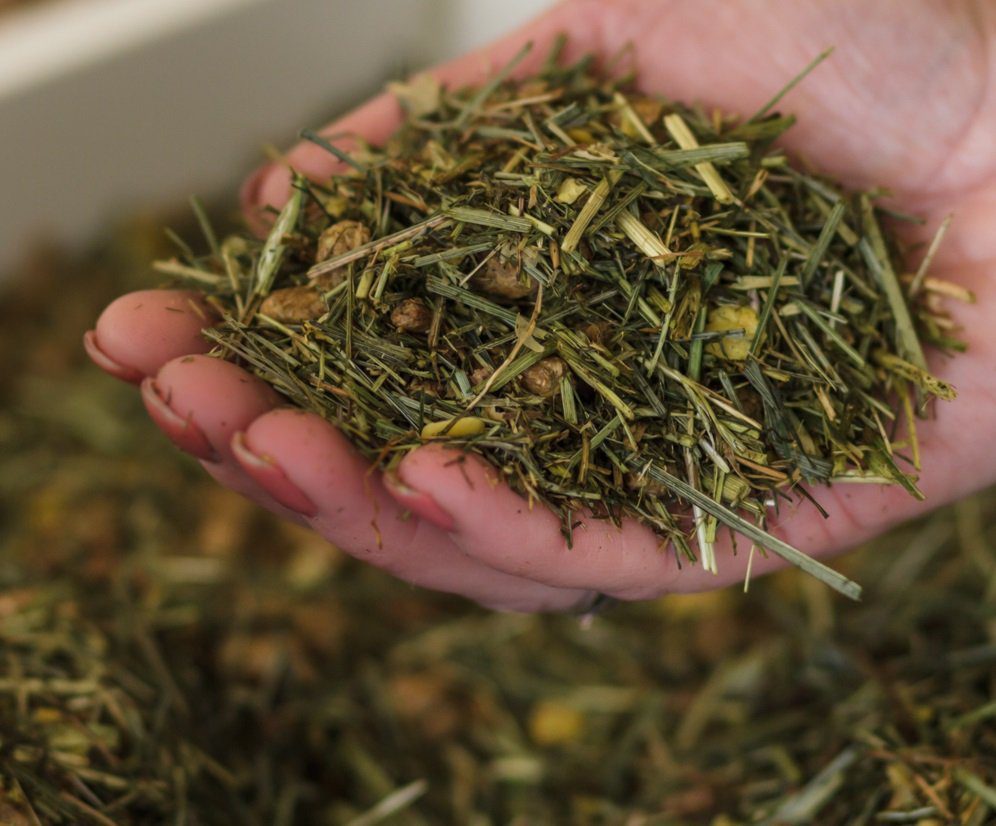As someone who has designed, formulated, manufactured, trialled and sold supplements through my own company and for partner companies, I am intrigued when I see companies making statements to the effect that their products do not include any “fillers” or “bulking agents”.
The implication is clearly that these fillers are cheap feed ingredients. They are used to make the customer think they are getting value for money by appearing to give them a large tub with only a low amount of active ingredients. However, there are actually a number of reasons why a company may use a “filler”, or in technical terms a “carrier”, in feed and supplements. Carriers may include wheat flour, limestone, alfalfa, rice flour, sugar alone or in combination.
Palatability
Some of the ingredients used in equine feed and supplements, such as vitamins, are not particularly palatable when used at efficacious levels. Therefore a carrier may be used to increase palatability. Flavours and sweeteners can also be added to carriers and the active ingredient to further improve palatability.
Stability
Some ingredients used in equine feed and supplements may normally have relatively short shelf life. Carriers can extend the shelf life of certain ingredients in a number of ways. The use of carriers with a very low moisture content can draw moisture out of other ingredients and helps to keep the overall moisture content of the finished supplement low, hence maintaining the active ingredients longer. Some active ingredients can also react chemically. Carriers increase the physical separation between different ingredients – this reduces chemical interaction and the risk of ingredients “clumping” together.
Distribution
When a single ingredient of uniform granule size is used in a feed or supplement, settling out in manufacture, transport and storage is not normally a problem. However, when a feed or supplement contains a number of different ingredients, and especially if these are different in granule size and density, then settling out can occur. Settling can reduce the efficacy of a feed or supplement as this may mean the intended dose of each ingredient is not achieved. It can also mean that the concentration of an ingredient with a low threshold for toxicity, such as selenium, may be higher in one part of the tub and increase the risk of over-dosing.
Ease of feeding
When feeding a single supplement such as glucosamine, if that ingredient has a density of 1 (1ml = 1g) then it may be possible to avoid using a carrier and simply provide a 10ml scoop (if the density is 1 then 10ml will equal 10g). However, few ingredients have a density of 1 and it is unusual to find that a formulation comes out to a convenient scoop size such as 10ml, 20ml or 25ml. If a formulation requires a finished product to be fed at 19.8ml per day, then it would be possible to have a scoop made that delivers 19.8ml. However, this would cost considerably more than using a convenient and readily available scoop size of say, 25ml, and manufacturers would pass that cost onto the customer. For this reason, a suitable carrier may be added to the formulation so that the actual volume fed per day is 25ml – such as 19.8ml active ingredient and 5.2ml carrier.
Functionality/efficacy
To enhance the activity of another active ingredient. A good example here is the combination of a source of carbohydrate (such as dextrose) when feeding concentrated protein, high dose branched chain amino acids (BCAA), or single amino acids such as leucine to enhance muscle growth or repair. Controlled studies have demonstrated that simultaneous carbohydrate ingestion enhances the effect. So, if you see dextrose or maltodextrin or similar on the label, it may not be there as a “bulking agent”, but instead for a very good, functional reason.
Alternative delivery / Balancing
In many instances, a feed or supplement may need certain ingredients balancing. For example, a supplement may require the addition of calcium to balance magnesium. Or calcium to balance phosphate/phosphorus. The simple approach might be to use ground limestone. However, in some instances it may be preferable to use the carrier to balance the product – like alfalfa, which is a good source of bioavailable calcium.
Safety
If the amount of a supplement to be fed was very small, such as a few mg per day, then it would be very easy to overdose. With a larger scoop size, the error in measuring is less. An example would be feeding biotin. The amount to be fed per day is very small (fractions of a ml – 1/100ths of a ml or ul – microlitres). So to make it easier to measure and feed, a carrier is usually used to increase the volume to be fed from a few 1/1000ths of a ml to perhaps 10ml.
Types of fillers
Many different ingredients may be used as fillers, such as limestone, glucose, alfalfa meal, linseed, wheatmeal, and oatmeal. Some companies promote these as being “bad” for horses, but in reality they are things most horses would get in their diet anyway and are usually only fed in small amounts.
In addition, whilst there is often a belief that horses may be allergic to certain feed ingredients, again, in reality, allergy is very rare. Particularly when it comes to fillers in supplements, the amounts fed are so small that problems are not at all common. Wheat and oat-based ingredients in particular seem to be perceived as especially bad for horses. Wheat intolerance does occur in people, so some owners may be aware of this and concerned about it, but it is still very rare and less of an issue in horses. Furthermore, even though oats may be high in starch, the amount fed in supplements in particular is so small it will not cause hindgut upset or excitement. Therefore the “anti” campaigns against these by some companies is not based on any real evidence.
So yes, I guess it’s possible that some companies may use “fillers” or “bulking-agents” as opposed to “carriers” to try to make it look like they are good value for money. But if they are doing this, then it should be apparent from the low levels of active ingredients stated on the label as required by law – assuming they conform.
I guess if they are using “fillers” excessively then you might find they are one of the companies that also flouts the law on label declarations. But if a carrier is included in an equine feed or supplement, it is probably there to ensure good palatability, improve the stability of the product, prevent settling out, to make it easy for you to give the product at the recommended feeding rate, and to reduce the risk of the product not working or overdosing your horse.






